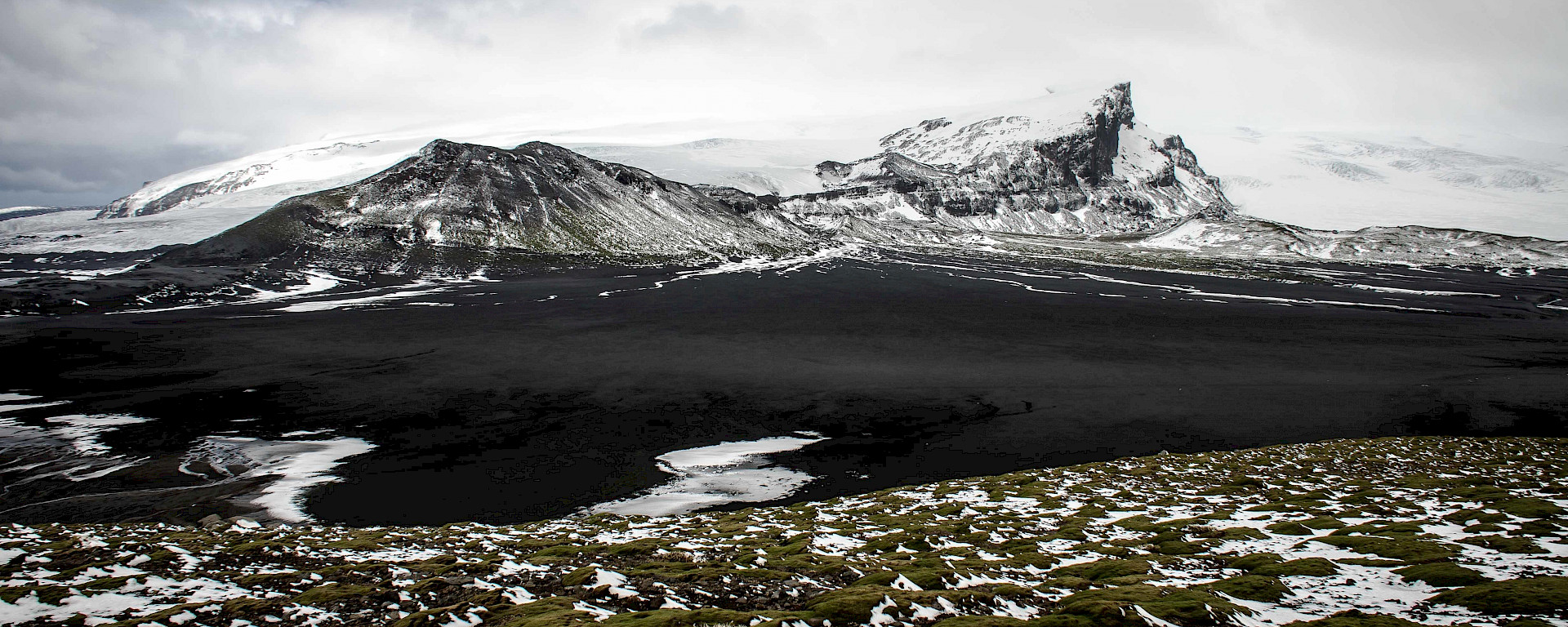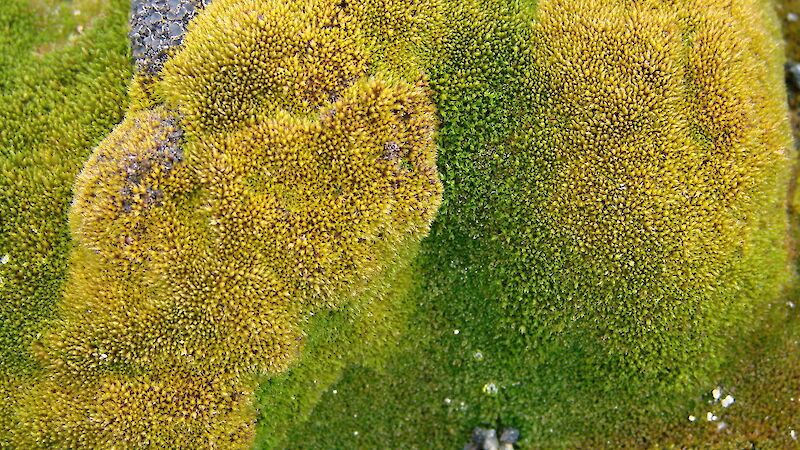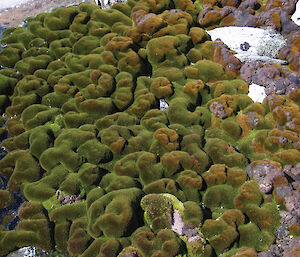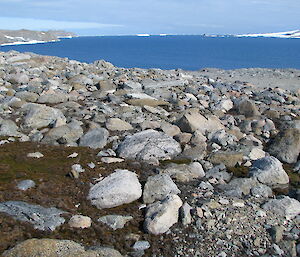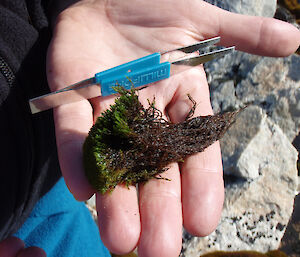Bryophytes can be found in almost all areas that are capable of supporting plant life in the Antarctic. Moss lawns often occur on meltwater flushes from ponds (such as at Casey station), or from glaciers (such as the Canada Glacier in Victoria Land).
Mosses have been collected from as far south as 84° 30′ (Ceratodon purpureus at Mt. Kyffin, Southern Victoria Land).
Life cycle
The dominant stage in the life cycle of bryophytes is the sexually reproducing gametophyte plant stage. But because of the extreme environmental conditions under which these plants exist, most reproduction occurs asexually. The plants can reproduce from a deciduous shoot apex or gemmae, which are asexual reproductive structures. Sexual reproductive structures may be present on the gametophyte, but male and female organs are rarely found on the same plant.
The sporophyte stage, produced after sexual reproduction, is often absent for Antarctic bryophytes. In the Continental Antarctic, only about 25% of moss species produce a sporophyte stage. In the Maritime Antarctic approximately 30% of moss species produce a sporophyte stage.
Adaptions
Many of the mosses in Antarctica have tightly packed stems and shoots to minimise water loss. Some mosses have orange carotenoid pigments. These may help protect the photosystem from damage during the growing season. Snow cover protects the plants from wind, windblown particles and temperature extremes. If the protective cover of snow is removed, photoinhibition can occur, which decreases growth rates.
Climate change and pollution
The impact of climate change on bryophytes is a major research topic of interest. Temperature, UVB, water availability and exposure to wind are all key factors that are changing in various ways and locations. The rate of the Antarctic peninsula's temperature rise is one of the fastest on the planet.
Bryophytes are quite sensitive to atmospheric pollution from distant sources. Traces of DDT and organochlorines have been detected in Antarctic bryophytes. Radionuclides have also been shown to accumulate Antarctic bryophytes, and in soil, lichen and algae. These radioactive forms can occur naturally, but are potentially from human activity.

